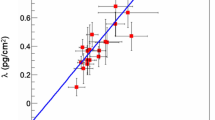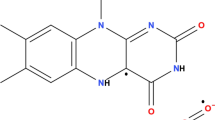Abstract
Although the efficacy of lithium as a mood stabilizer is well documented, the mechanism of its therapeutic effect associated with prolonged treatment remains unknown. Identifying discrete brain regions and neural pathways that are functionally altered following long-term lithium treatment is central to elucidating a psychotherapeutic mechanism. We have used a sensitive and quantitative histochemical assay for the determination of cytochrome oxidase (CO) activity, a mitochondrial marker of neuronal activity, to determine the effect of repeated lithium treatment on regional neuronal activity in the rat brain. Oral lithium treatment (21 days) selectively decreased cytochrome oxidase activity in the cingulate cortex and regions of the nucleus accumbens. These decreases were not seen after 5 days of lithium administration, although serum lithium concentrations were similar after both 5 and 21 days of treatment. The analysis of interregional correlations further suggests a role for amygdala pathways in the effects of lithium following 21 days of treatment. The implications of these data for understanding the mechanisms of action of lithium are discussed.
Similar content being viewed by others
Log in or create a free account to read this content
Gain free access to this article, as well as selected content from this journal and more on nature.com
or
References
Alexander GE, Crutcher MD, DeLong MR . (1990): Basal ganglia–thalamocortical circuits: Parallel substrates for motor, oculomotor, “prefrontal,” and “limbic” functions. Prog Brain Res 85: 85–146
Brauth SE . (1990): Investigation of central auditory nuclei in the budgerigar with cytochrome oxidase histochemistry. Brain Res 508: 142–146
Cada A, Gonzalez-Lima F, Rose GM, Bennett MC . (1995): Regional brain effects of sodium azide treatment on cytochrome oxidase activity: A quantitative histochemical study. Metab Brain Dis 10
Carli M, Morissette M, Hebert C, Di Paolo T, Reader TA . (1997): Effects of chronic lithium treatment on central dopamine neurotransporters. Biochem Pharm 54: 391–397
Carli M, Reader TA . (1997): Regulation of central serotonin transporters by chronic lithium: An autoradiographic study. Synapse 27: 83–89
Devinsky O, Morrell MJ, Vogt BA . (1995): Contributions of anterior cingulate cortex to behavior. Brain 118: 279–306
Drevets WC, Price JL, Simpson JR Jr, Todd RD, Reich T, Vannier M, Raichle ME . (1997): Subgenual prefrontal cortex abnormalities in mood disorders. Nature 386: 824–927
Frank RA, Stutz RM . (1982): Behavioral changes induced by basolateral amygdala self-stimulation. Physiol Behav 28: 661–665
Gelenberg AJ, Carrol JA, Baudhuin MB, Jefferson JW, Greist JH . (1989): The meaning of serum lithium levels in maintenance therapy of mood disorders: A review of the literature. J Clin Psych 50: 17–22
Gonzalez-Lima F, Garrosa M . (1991): Quantitative histochemistry of cytochrome oxidase in rat brain. Neurosc Lett 123: 251–253
Gonzalez-Lima F . (1992): Brain imaging of auditory learning functions in rats: Studies with fluorodeoxyglucose autoradiography and cytochrome oxidase histochemistry. In Gonzalez-Lima F, Finkenstadt TH, Scheich H (eds), Advances in metabolic mapping techniques for brain imaging of behavioral and learning functions. Kulwer Academic Publishers, pp 39–109
Gonzalez-Lima F, Cada A . (1994): Cytochrome oxidase activity in the auditory system of the mouse: A qualitative and quantitative histochemical study. Neuroscience 63: 559–578
Gonzalez-Pardo H, Novelli A, Menendez-Patterson A, Arias JL . (1996): The development of oxidative metabolism in diencephalic structures of the rat: A quantitative study. Brain Res Bull 41: 31–38
Goodwin GM, Cavanagh JTO, Glabus MF, Kehoe RF, O'Carroll RE, Ebmeier KP . (1997): Uptake of 99mTc-exametazine shown by single photon emission computed tomography before and after lithium withdrawal in bipolar patients: Associations with mania. Br J Psychiatr 170: 426–430
Groenewegen HJ, Wright CI, Beijer AVJ . (1996): The nucleus accumbens: A gateway for limbic structures to reach the motor system? Prog Brain Res 107: 486–511
Harley CA, Bielajew CH . (1992): A comparison of glycogen phosphorylase and cytochrome oxidase histochemical staining in rat brain. J Comp Neurol 322: 377–389
Hevner RF, Liu S, Wong-Riley MTT . (1993): An optimized method for determining cytochrome oxidase activity in brain tissue homogenates. J Neurosci Meth 50: 309–319
Horwitz B, McIntosh AR, Haxby JV, Grady CL . (1995): Network analysis of brain cognitive function using metabolic and blood flow data. Behav Brain Res 66: 187–193
Hovda DA, Chugani HT, Villablanca JR, Badie B, Sutton RL . (1992): Maturation of cerebral oxidative metabolism in the cat: A cytochrome oxidase histochemistry study. J Cerebr Blood Flow Metab 12: 1039–1048
Jousisto-Hanson J, Stenfors C, Theodorsson E, Mathe AA . (1994): Effect of lithium on rat brain neurotensin, corticotropin releasing factor, somatostatin, and vasoactive intestinal peptide. Lithium 5: 83–90
Kalynchuk LE, Pinal JPJ, Treit D . (1998): Long-term kindling and interictal emotionality in rats: Effect of stimulation site. Brain Res 779: 149–157
Lane RD, Reiman EM, Bradley MM, Lang PJ, Ahern GL, Davidson RJ, Schwartz GE . (1997): Neuroanatomical correlates of pleasant and unpleasant emotion. Neuropsychologia 35: 1437–1444
LeDoux JE . (1992): Brain mechanisms of emotion and emotional learning. Curr Opin Neurobiol 2: 191–197
Lowry OH, Rosbrough NJ, Farr AL, Randall RJ . (1951): J Biol Chem 193: 265–270
Lukaszewska I, Korczynski R, Markowska A, Kostarczyk E . (1980): Emotionality and exploratory behavior following corticobasomedial amygdala lesion in rat. Acta Neurobiol Exp 40: 911–932
Manji HK, Lenox RH . (1994): Long-term action of lithium: A role for transcriptional and post-transcriptional factors regulated by protein kinase C. Synapse 16: 11–28
Manji HK, Potter WZ, Lenox RH . (1995): Signal transduction pathways: Molecular targets for lithium's actions. Arch Gen Psychiat 52: 531–543
Mathe AA, Norstedt Wikner B, Stenfors C, Theodorsson E . (1994): Effects of lithium on neuropeptide Y, Neurokinin A, and substance P in brain and peripheral tissues of rat. Lithium 5: 241–247
Miller JC, Mathe AA . (1997): Basal and stimulated C-fos mRNA expression in the rat brain: Effect of chronic dietary lithium. Neuropsychopharmacology 16: 408–418
Nestler EJ, Terwilliger RZ, Duman RS . (1995): Regulation of endogenous ADP-ribosylation by acute and chronic lithium in rat brain. J Neurochem 64: 2319–2324
National Institutes of Health. (1996): NIH Guide for the Care and Use of Laboratory Animals. Bethesda, MD, NIH
Paxinos G, Watson C . (1986): The rat brain in stereotaxic coordinates (2nd ed). San Diego, Academic Press
Pitkanen A, Savander V, LeDoux JE . (1997): Organization of intra-amygdaloid circuitries in the rat: An emerging framework for understanding functions of the amygdala. Trends Neurosci 20: 517–523
Reiman EM, Lane RD, Ahern GL, Schwartz GE, Davidson RJ, Friston JK, Yun L-S, Chen K . (1997): Neuroanatomical correlates of externally and internally generated human emotion. Am J Psych 154: 918–925
Simonian NA, Hyman BT . (1995): Functional alterations in neural circuits in Alzheimer's disease. Neurobiol Aging 16: 305–309
Wong-Riley MTT . (1989): Cytochrome oxidase: An endogenous metabolic marker of neuronal activity. Trends Neurosci 12: 94–101
Author information
Authors and Affiliations
Rights and permissions
About this article
Cite this article
Lambert, P., McGirr, K., Ely, T. et al. Chronic Lithium Treatment Decreases Neuronal Activity in the Nucleus Accumbens and Cingulate Cortex of the Rat. Neuropsychopharmacol 21, 229–237 (1999). https://doi.org/10.1016/S0893-133X(98)00117-1
Received:
Revised:
Accepted:
Issue date:
DOI: https://doi.org/10.1016/S0893-133X(98)00117-1



